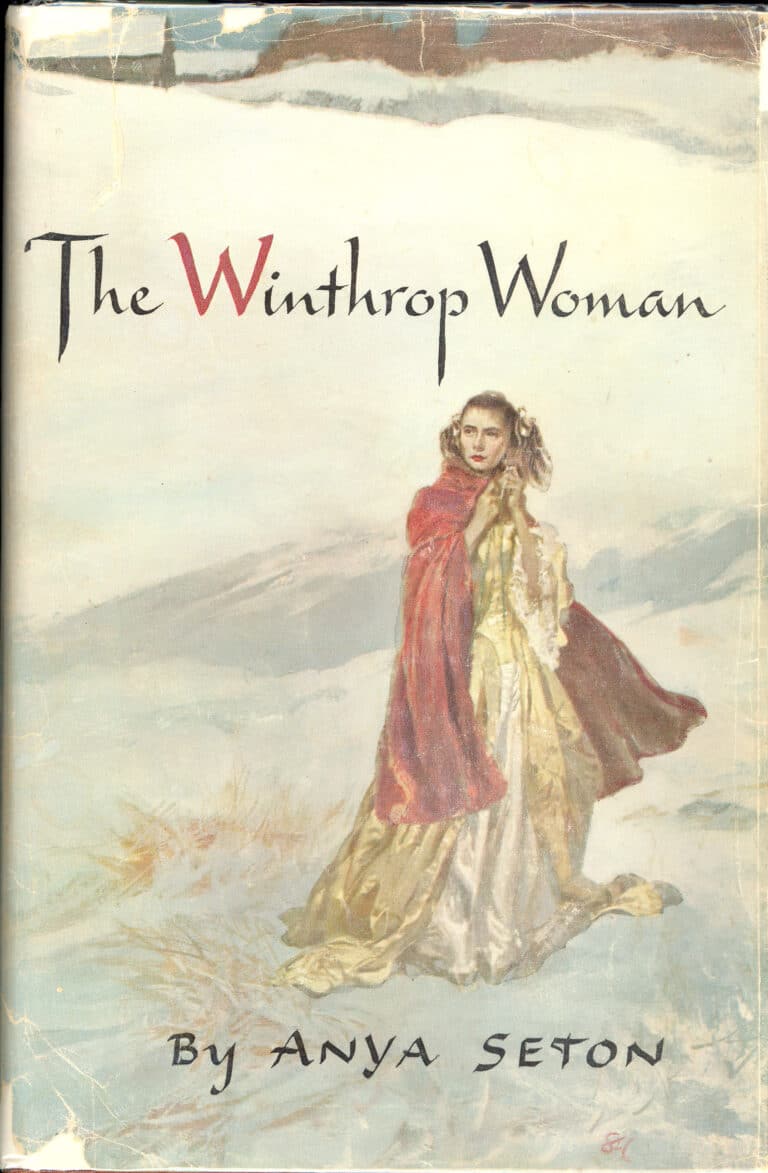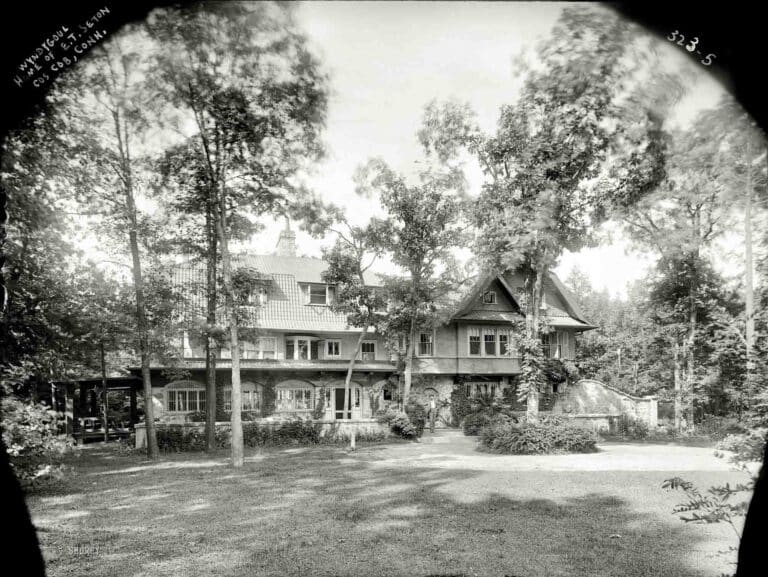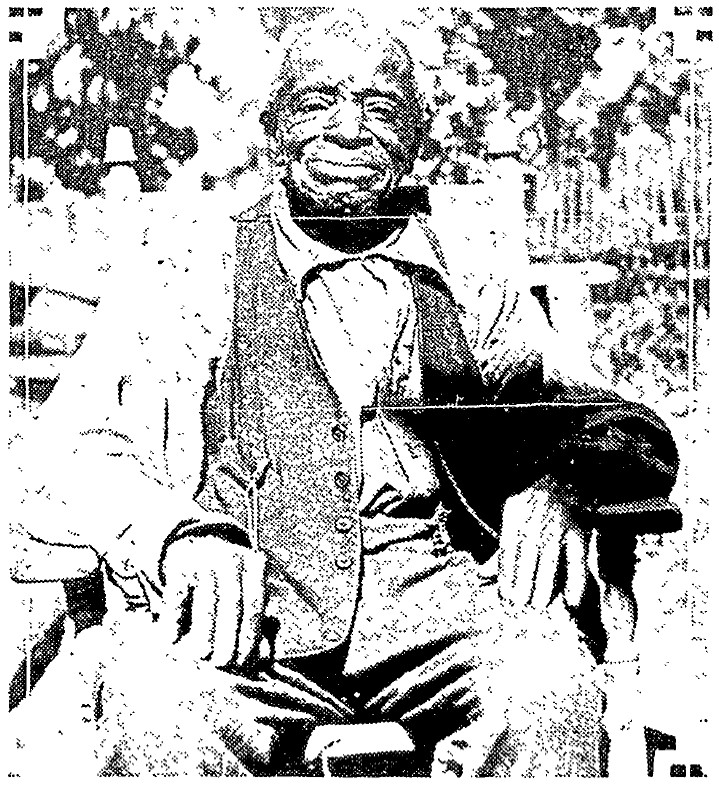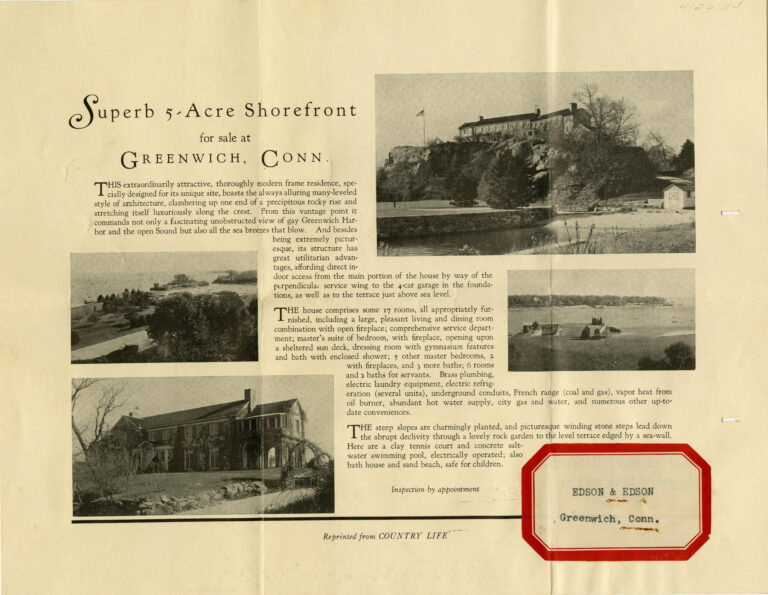Presented by Christopher Shields, Curator of Library and Archives, Greenwich Historical Society, July 18, 2024 at Innis Arden Cottage, Greenwich Point
Occasions like Founders Day give us the opportunity to step away from our routine day to day activities and be thoughtful of the many people whose contributions both large and small, well-documented and anonymous, have helped build the town that we live and work in today.
Founders Day recognizes the European settlement of Greenwich. It marks the beginning of a very significant period in our history. At the same time, it represents one point on a much longer timeline that stretches back far earlier than 1640 in terms of the people who have made their lives in this area. Looking at Founders Day as both a beginning and also as a point along an extended spectrum of time provides context and perspective. It stimulates our curiosity to learn more, to expand our understanding of a very rich, multi-faceted history.
Elizabeth Fones Winthrop Feake Hallet was one of the earliest Europeans to call Greenwich home. She is widely recognized today as one of the founders of the Town of Greenwich.
Elizabeth showed independence and ability early in her life. She was 11 years old when her mother died and subsequently assumed responsibilities in her father’s apothecary shop. She carried this independent streak into affairs of the heart, marrying her first cousin, Henry Winthrop, against her family’s wishes. Later, Elizabeth bravely chose to relocate to the New World as a single mother. Her actions are indicative of someone with confidence in their abilities to face a variety of challenges.
Elizabeth had a life full of challenges. She lost two husbands. Her first husband, Henry Winthrop, drowned shortly after arriving in Massachusetts. He had traveled ahead of Elizabeth who was pregnant and remained in England. Her second husband, Robert Feake, had psychological issues which caused him to abandon his family.
Greenwich at the time that Elizabeth lived here was a wild and dangerous place. It is difficult for us to imagine today how untamed this location was in the 17th century. It was a dangerous frontier in a contested area between English and Dutch control. Help was days if not weeks away if it was needed.
Numerous societal constraints were also placed upon Elizabeth. She used her own money to purchase land in her name, something that was not considered favorably by Puritan society. Her choice showed an awareness on Elizabeth’s part of the power inherent in land ownership and consideration for the future inheritance by her children.
Elizabeth mostly had to manage family and property on her own due to Feake’s illness and absences. This level of autonomy for a woman was also in opposition to the Puritan worldview.
After Robert Feake abandoned her, she married William Hallett while Feake was still alive and without definitive evidence of a divorce. This scandalized Puritan society. Elizabeth’s action was considered adultery and she could have paid with her life for the transgression were it not for being the niece of Gov. John Winthrop. Nevertheless, the scandal forced Elizabeth and William to flee Greenwich for New Amsterdam.
We remember Elizabeth today as an early inhabitant and founder of Greenwich, but historically she has not always received this credit. I found a 1954 article that indicates it was called Elizabeth’s Neck “after the wife of one of the early settlers.” Other articles speculate that the Point was named after Queen Elizabeth I. Elizabeth has not been featured in the most common visual representations of early settlement, including imagery on the former seal of the Historical Society of the Town of Greenwich. Indeed these images don’t show any women at all.
The official Greenwich Tercentenary program from 1940 doesn’t mention Elizabeth. The Tercentenary celebration featured a huge, dramatic spectacle called “Under Three Flags” which completely omitted Elizabeth.
The Winthrop Woman, a novel written by Greenwich resident Anya Seton and published in 1958, was pivotal in bringing attention back to Elizabeth and her life. This work of historical fiction most certainly promoted further research and scholarship.
It is important to note that Elizabeth had a friendship with Anneken (or Anna) Patrick, Daniel Patrick’s Dutch wife who was also part of this founding contingent. In many accounts if Anna is mentioned at all, she is largely hidden in the shadow of her notorious husband. Anna faced similar challenges, including an unpredictable husband and life in a wild, untamed location.Anna also, like Elizabeth, had the responsibilities of motherhood to manage on top of everything else (she would have four children in her care by the end of 1640).
As we think about Elizabeth and Anna’s achievements given all the challenges they faced, it is an opportunity to remember some other notable women associated with Greenwich Point. Although they were far removed from the founding of Greenwich but, like Elizabeth, they were trailblazers and ahead of their time.
The first of these women was Anna Caroline Maxwell, referred to as “the American Florence Nightingale.” Between 1906 and 1913, J. Kennedy Tod made Innis Arden Cottage available to Anna Maxwell and her students as a summer retreat.
Maxwell made critical contributions to the training of nurses in the United States. She established the Nurses School at the Presbyterian Hospital in New York. J. Kennedy Tod was on the board at N.Y. Presbyterian and was an avid supporter of Maxwell.
Earlier in her career Maxwell worked to improve conditions at military hospitals during the Spanish-American War. The efforts she led reduced the typhoid death rate among patients. There is a great quote by the Colonel in charge of a military hospital in Georgia where she and her assistants worked: “When you came we did not know what to do with you. Now we do not know what we would have done without you.”
During the First World War, Maxwell continued her important efforts on behalf of America’s military by helping to train nurses for the challenges they would face. When she died, she was provided full military honors at Arlington National Cemetery for her service.
The architect of Innis Arden Cottage, Katharine Cotheal Budd, was a pioneering female architect who collaborated with other female architects and had her own NYC based practice for over 30 years. One-hundred years ago this year, Budd was the first woman admitted into the NY Chapter of the American Institute of Architects. Greenwich is privileged to have this beautifully restored cottage as it is recognized as a seminal example of early bungalow style architecture.
Finally, there’s landscape architect Marian Cruger Coffin. She worked on the landscaping at Tod’s Point between 1918 and 1920 and designed what is today called the Seaside Garden. Coffin had other commissions in Greenwich, including her work for Robert Montgomery in 1945 (today the property is the Montgomery Pinetum).
Marian graduated from M.I.T.’s landscape architecture program in 1903 but was unable to get employment with any established firms because she was a woman. She established her own firm and through her friendship with Henry Francis Dupont she was hired to design the landscape for the Dupont estate, Winterthur, in 1908. This led to her being hired by many other prominent families as well as projects with the New York Botanical Garden and Connecticut College.
Founders Day is an opportunity to remember that history is never a closed book. There is always an opportunity to find new sources and re-examine what we think we know to gain a clearer understanding of the past.





